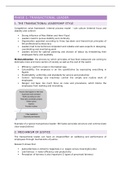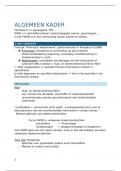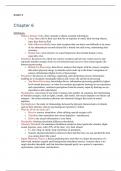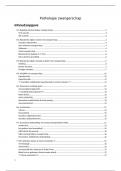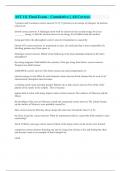Samenvatting
Summary Phase 1: transactional leader
- Instelling
- Universiteit Gent (UGent)
Samenvatting van de slides, het boek en eigen notities van 'phase 1: the transactional leader'. Vak: Operational Human Resource Management Professor: Catherine Apers Door deze samenvatting haalde ik een mooie 14/20 op het mondelinge examen.
[Meer zien]
